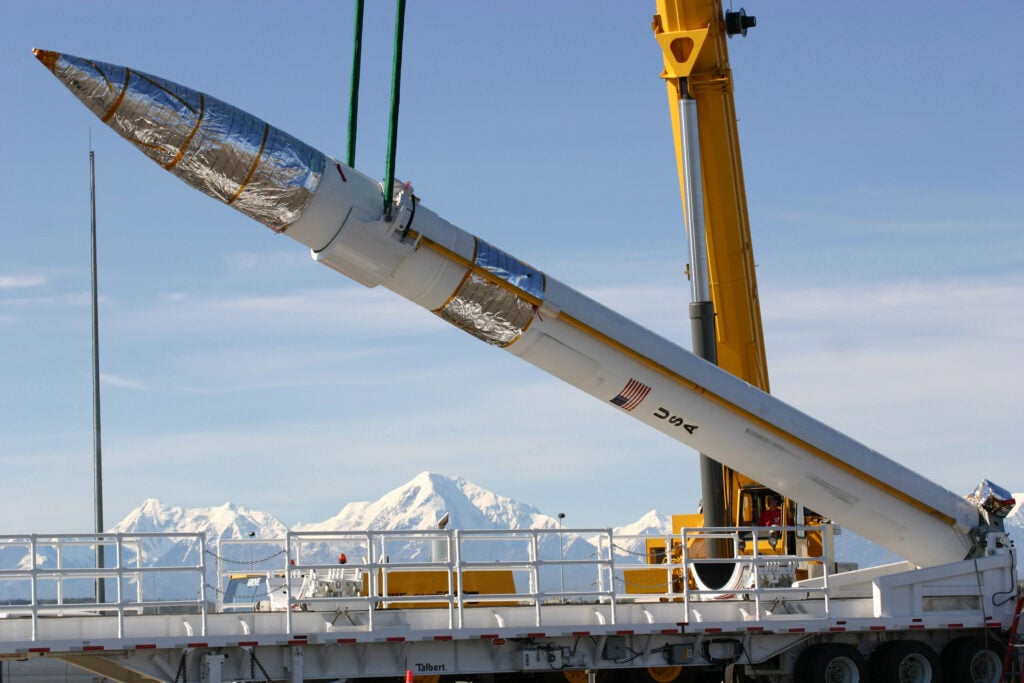GMD Missile Defense Hits ICBM Target, Finally
Posted on

A Ground-Based Interceptor is lowered into its missile silo in Alaska.
WASHINGTON: Two days after North Korea’s latest missile launch, the US conducted a successful test of its homeland missile defense system for the first time in almost three years. Codenamed FTG-15, today’s event was also the system’s first test ever against an “ICBM-class” target, as opposed to lesser surrogates, the Missile Defense Agency announced. The painful history of Ground-based Mid-course Defense (GMD) — which, as GAO notes, has cost $123 billion since 2002 — now stands at nine successful tests out of 18 since 1999, exactly 50 percent.

Tom Karako
“Today’s intercept means that hit-to-kill deniers are going to have an even harder time contending that homeland missile defense doesn’t work,” said Thomas Karako, missile defense director at the Center for Strategic & International Studies. “This is an important day for homeland missile defense, and a bad day for Kim Jung-un.”
How bad a day? If that 50 percent hit rate carried over into real-world operations — and critics like the Union of Concerned Scientists say the tests have been unrealistically easy — it means the current inventory of 36 Ground-Based Interceptors (GBI) could shoot down 18 incoming ICBMs before coming up empty. That’s probably enough to cope with North Korea or Iran, at least in the near term. US policymakers have emphasized for years that this “limited” missile defense system is not designed — or powerful enough — to be used against China or Russia, which have vastly more missiles.
The Missile Defense Agency will build up to 44 GBIs by year’s end, a marginal improvement, but it’s well aware that “two interceptors to stop one incoming” is ugly math. That’s why MDA has accelerated development of a Multi-Object Kill Vehicle (MOKV), which turns each interceptor into a kind of precision-guided shotgun, firing multiple warheads at multiple incoming targets from a single GBI rocket. Originally scheduled to enter service around 2030, the MOKV will now go on GBIs in 2025. Funding requested for 2018 is $259 million, out of a $7.9 billion MDA budget.

The Airborne Laser Testbed, mothballed in 2012.
In the longer run, MDA is looking at lasers, requesting $54 million in 2018 for R&D. Unlike rockets (or, for that matter, old-school chemical lasers), solid-state lasers expend no ammunition, just electricity, so they can keep firing as long as they have power. Other branches of the military are already field-testing lasers for short-range defense against drones and battlefield rockets, but MDA has to hit much harder targets at much longer range. Their plan is to revive the concept behind the cancelled Airborne Laser — a 747 full of toxic chemicals — by developing a solid-state laser compact enough to go aboard a drone, which would fly in lazy circles near a hostile country and zap its missiles as they launched. That so-called “boost phase intercept” would hit incoming weapons at their most vulnerable, when the missiles were still lifting off, with warheads still affixed to highly visible and volatile rocket boosters.
The GMD system tested today, by contrast, flings an Exoatmospheric Kill Vehicle (EKV) above the atmosphere to literally ram incoming warheads in space. So precise is the aim, and so intense the collision, that there’s no need for an explosive warhead. The EKV smashes the target to bits. Getting it on-target requires a globe-spanning network of sophisticated sensors, including the controversial Sea-Based X-Band Radar (SBX), a high-tech floating platform, which feed target data into the Command, Control, Battle Management and Communication (C2BMC) system, which in turn directs the interceptor.
Such “hit to kill” intercepts are a tremendous technological challenge, what Eisenhower famously likened to “hitting a bullet with a bullet,” but today it’s the standard approach for the low-altitude Patriot interceptor, the medium-altitude THAAD, and the high-altitude GBI. Today’s test isn’t decisive, but it does tip the scales significantly in favor of the proposition that the technology actually works.
Colin contributed to this story.
Subscribe to our newsletter
Promotions, new products and sales. Directly to your inbox.
